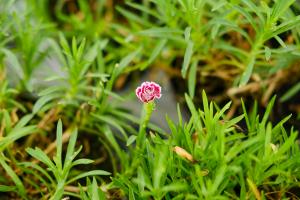How to Get a Start Off a Rubber Tree Plant
Rubber tree plants are easy to grow, and they are a great addition to any indoor plant collection. Getting a start off a rubber tree plant is the easiest way to propagate it. In this article, we will discuss the steps you need to take to get a start off a rubber tree plant.
Step 1: Choose a Healthy Rubber Tree Plant
The first step in getting a start off a rubber tree plant is to choose a healthy plant. Look for a plant that is at least two years old and has healthy, green leaves. Avoid plants with yellowing or brown leaves or those that have been treated with pesticides recently. These plants will not take root easily, and you will have a difficult time propagating them.
Step 2: Prepare Cuttings
The next step is to prepare cuttings from the rubber tree plant. Cut a stem from the plant that is at least four inches long and has at least two leaves. Make the cut below a node, which is the point where the leaves attach to the stem. Remove the bottom leaves from the cutting, leaving only two or three at the top. This will help the cutting focus its energy on developing roots.
Step 3: Plant the Cuttings
Once you have prepared the cuttings, it is time to plant them. Fill a small pot with well-draining soil and create a hole in the center. Dip the cut end of the stem in rooting hormone and then place it in the hole. Firm the soil around the stem to hold it in place. Water the soil and place the pot in a warm and bright spot, away from direct sunlight.
Step 4: Care for the Cuttings
Once you have planted the cuttings, it is important to care for them properly. Keep the soil moist but not wet, and mist the leaves with water to keep them hydrated. Avoid overwatering, as this can cause the stem to rot. After a few weeks, you should see new growth on the cutting, which is a sign that it has taken root.
Step 5: Transplant the Cuttings
Once the cutting has taken root, it is time to transplant it into a larger pot. Choose a pot that is one size larger than the current one and fill it with well-draining soil. Remove the cutting from the old pot, being careful not to disturb the roots, and plant it in the new pot. Water the soil and place the pot in a warm and bright spot, away from direct sunlight. Continue to care for the plant as you would any other rubber tree, and enjoy watching it grow.
Conclusion
In conclusion, getting a start off a rubber tree plant is a simple and rewarding process. By following these steps, you can easily propagate a rubber tree and add it to your indoor plant collection. Remember to choose a healthy plant, prepare cuttings, plant them properly, care for them, and transplant them when they are ready. With a little bit of time and effort, you can have a beautiful and thriving rubber tree plant in your home.

 how many times do yo...
how many times do yo... how many planted tre...
how many planted tre... how many pine trees ...
how many pine trees ... how many pecan trees...
how many pecan trees... how many plants comp...
how many plants comp... how many plants can ...
how many plants can ... how many plants and ...
how many plants and ... how many pepper plan...
how many pepper plan...































